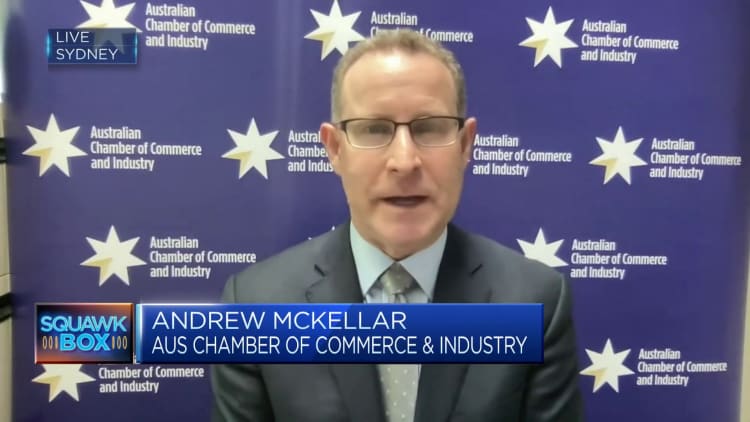The head of Australia's central bank on Wednesday pledged to do whatever is necessary to bring inflation back to target, warning that risks to inflation are on the upside and households should brace for the pain ahead.
Appearing before lawmakers, Reserve Bank of Australia Governor Philip Lowe said inflation expectations were well anchored for now, but that cannot be taken for granted and entrenched inflation would lead to higher interest rates and unemployment.
The RBA has projected headline inflation to return to the top of the bank's target of 2%-3% by mid-2025, a slower path than many other economies as Lowe wants to preserve strong gains in the labor market.
"Mid-2025 is pressing the length of time we can reasonably take, because if we take longer than that, people may reasonably say: 'Are you serious about the inflation target?' I want to reassure you we're serious," said Lowe.
"The risk to inflation is to the upside and we need to be attentive to that."
Services price inflation could remain elevated due to high unit labor costs if productivity growth failed to pick up, warned Lowe, adding that there are also uncertainties about the slowdown in household spending and the global economy.

The RBA has already raised interest rates by a whopping 375 basis points since May last year to an 11-year high of 3.85%. It has warned that more rate rises may be required to bring inflation back to target.
Lowe said success in the inflation fight is not guaranteed, and "it's going to be painful for a while yet" for Australian households.
"We won't be declaring victory until victory is achieved."
Markets see the RBA holding rates steady next month, but there is a sizeable chance of another quarter-point hike in August or September, and rates are expected to stay elevated for the rest of the year.
Economic data over the past month has been on the soft side. Retail sales were flat in April as consumers cut back spending on food and dining out, while quarterly gains in wages missed forecasts and a red-hot labor market showed signs of cooling.

